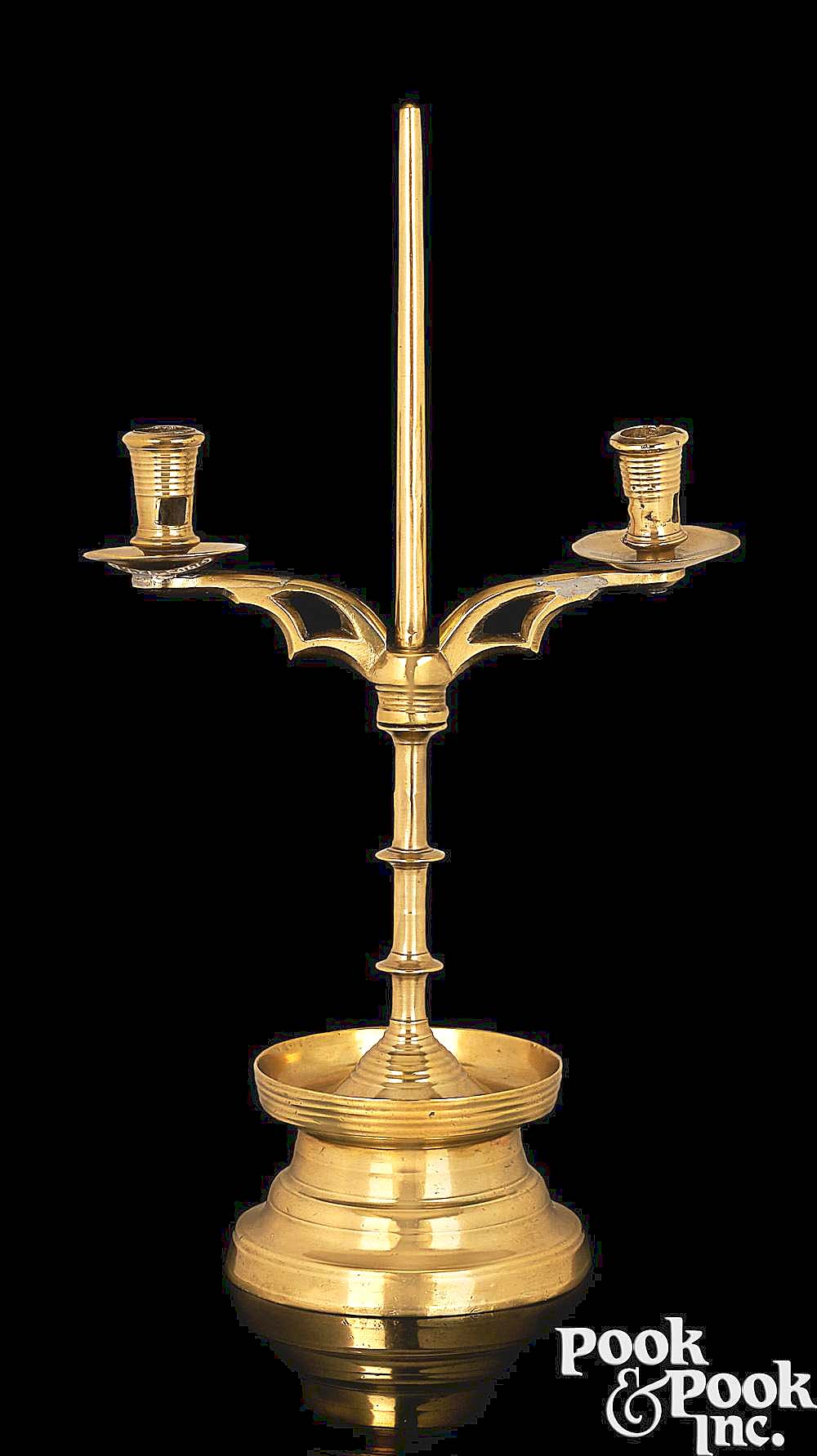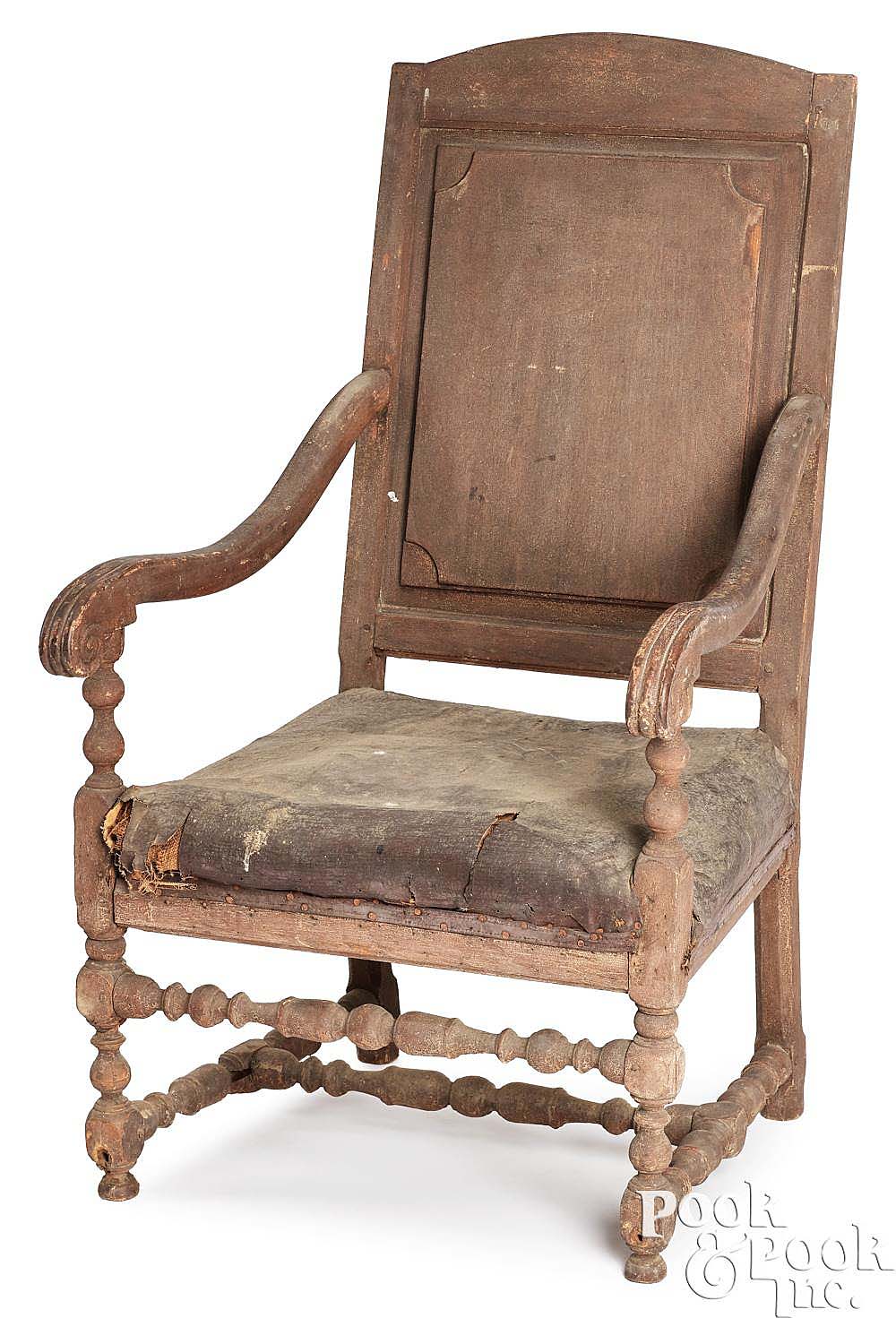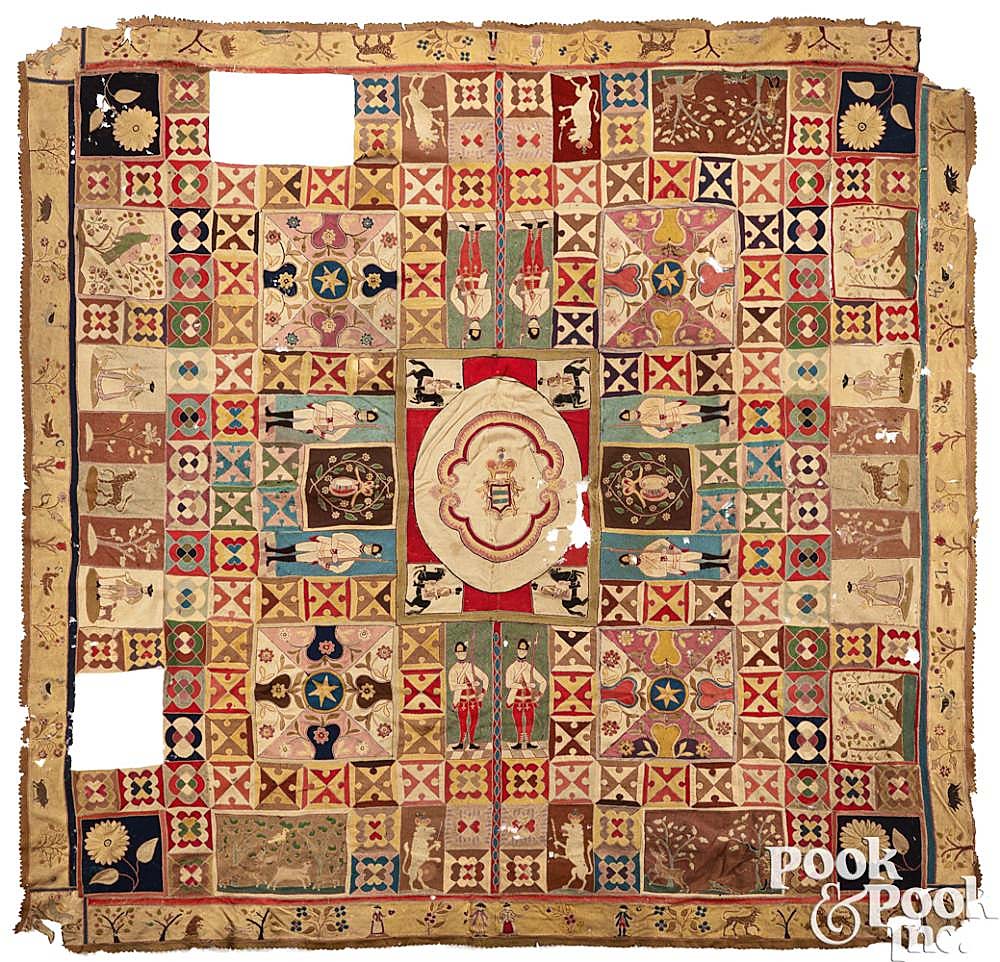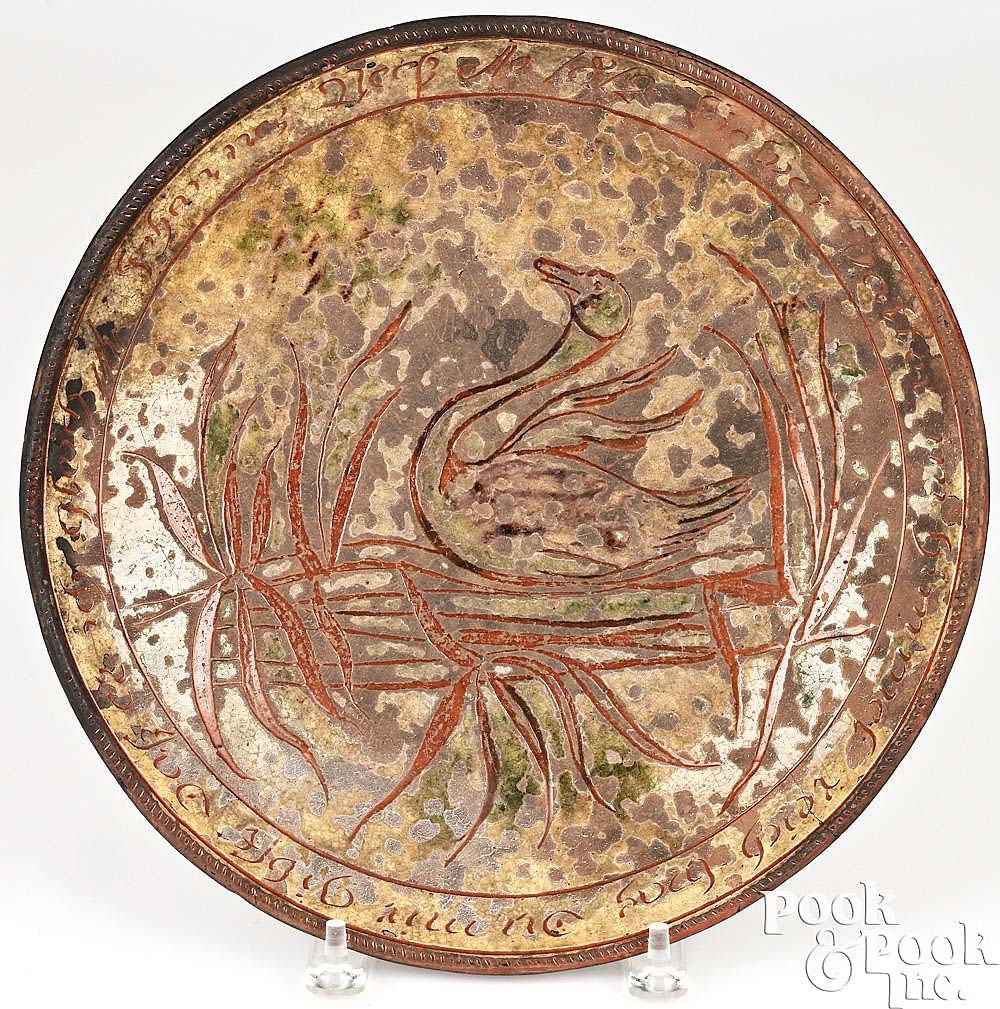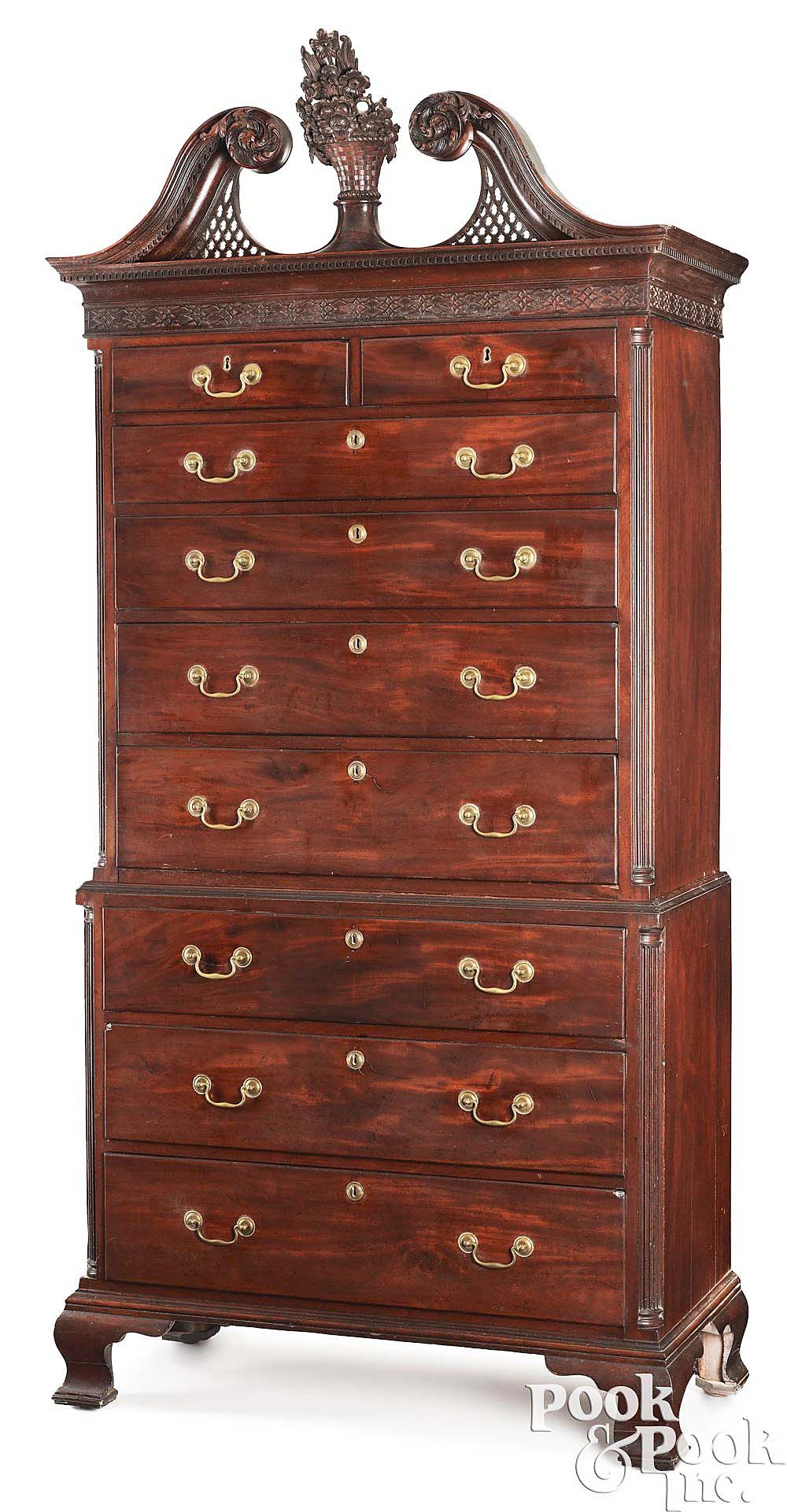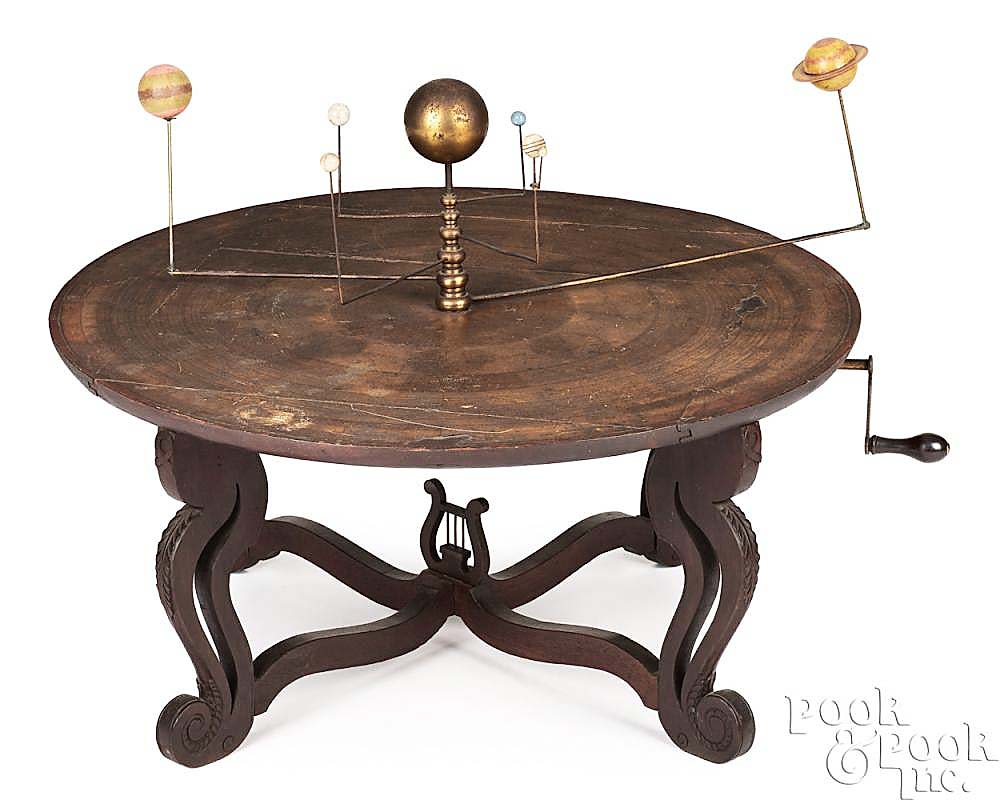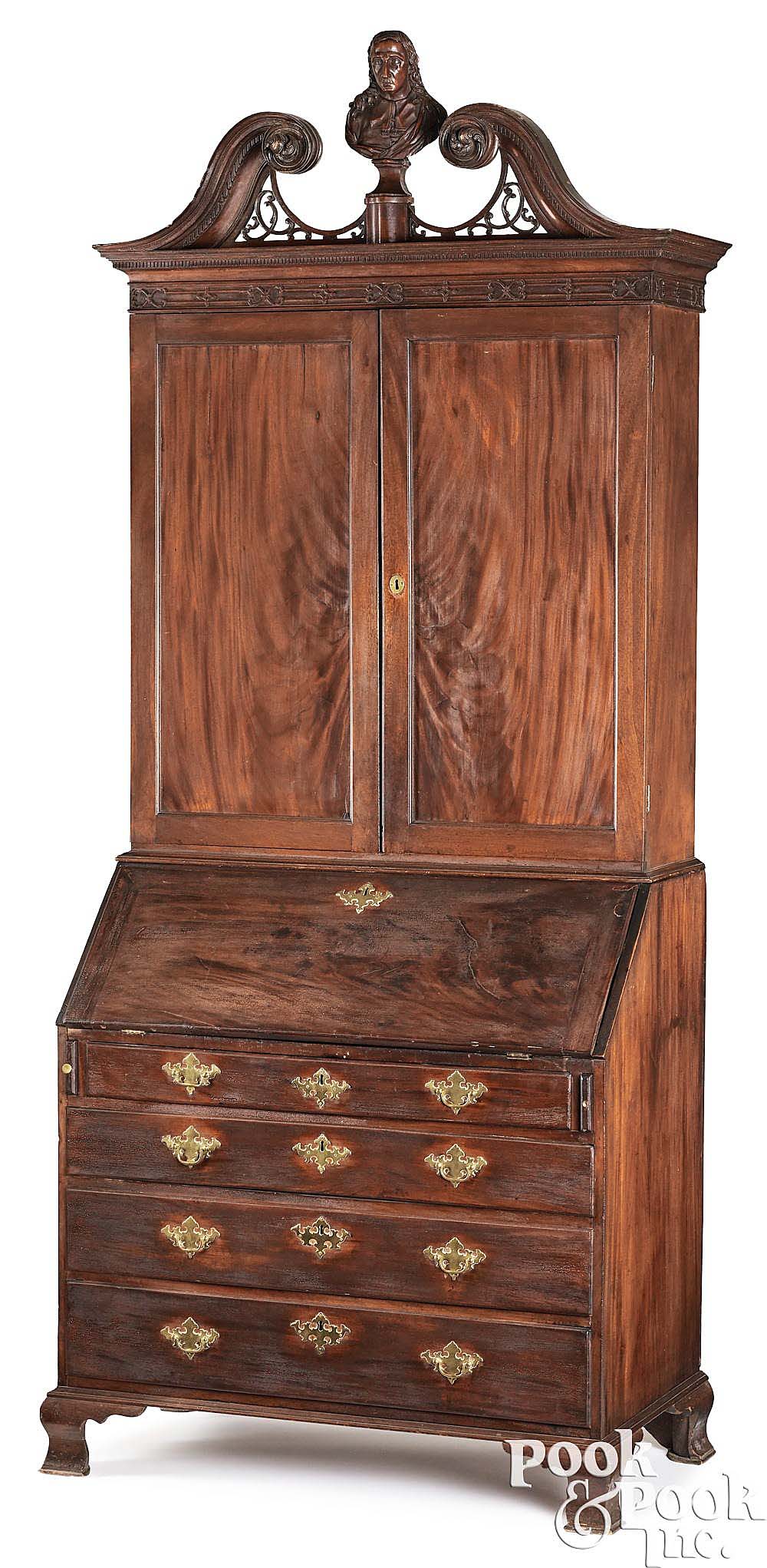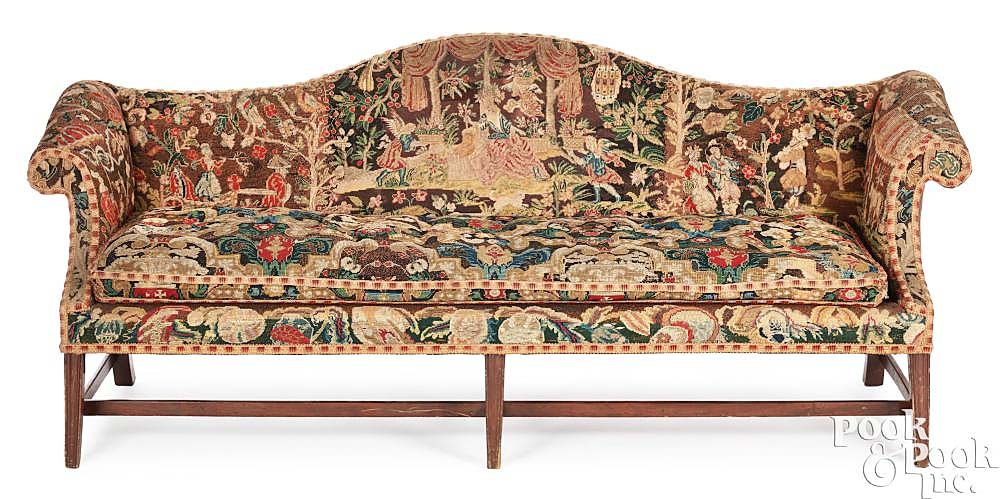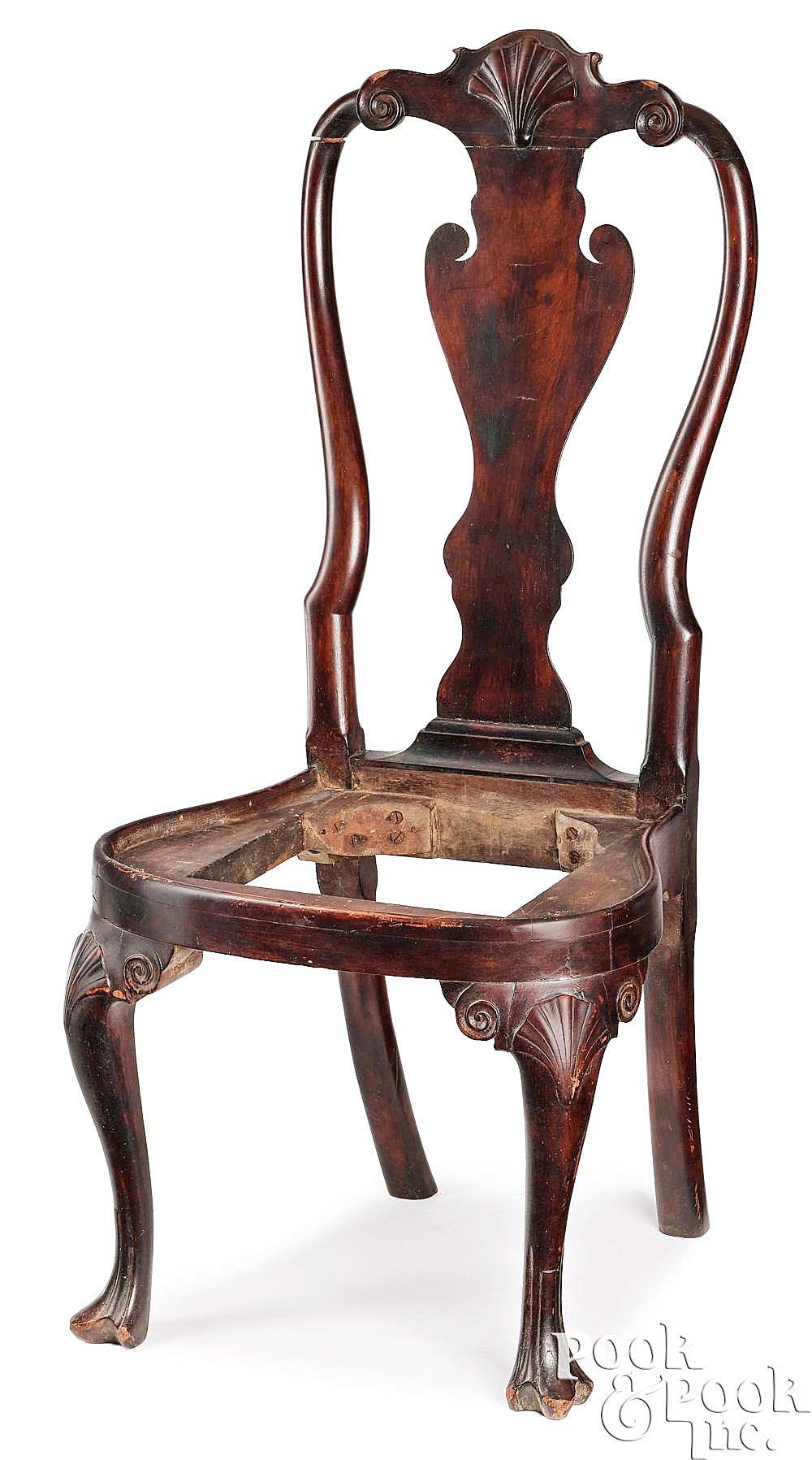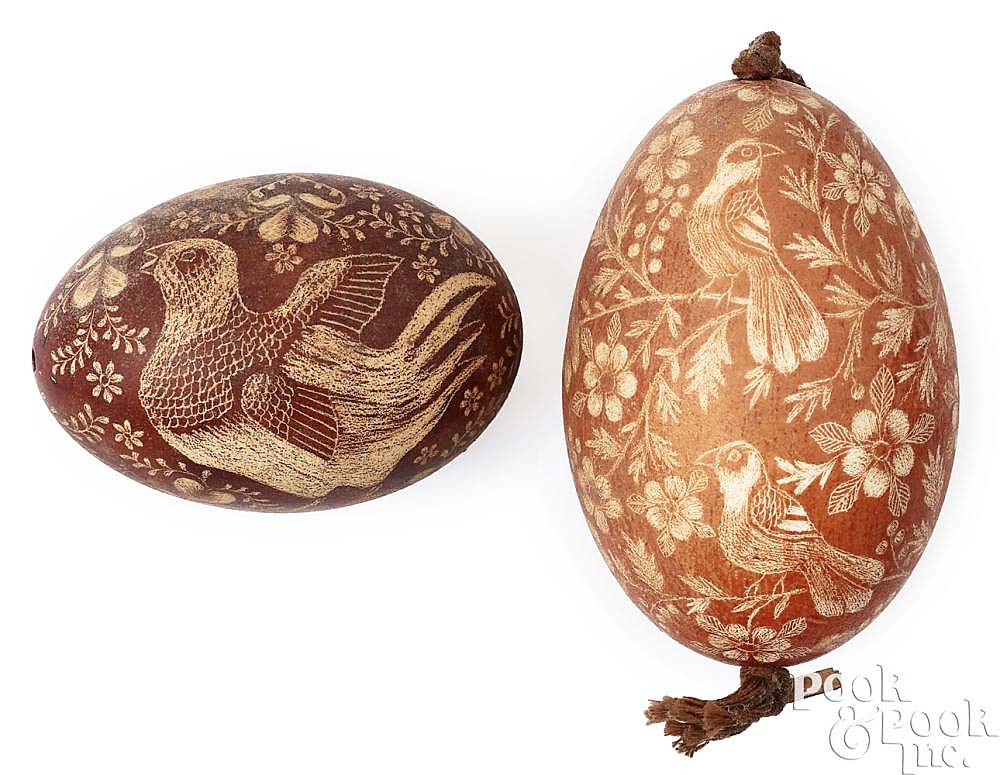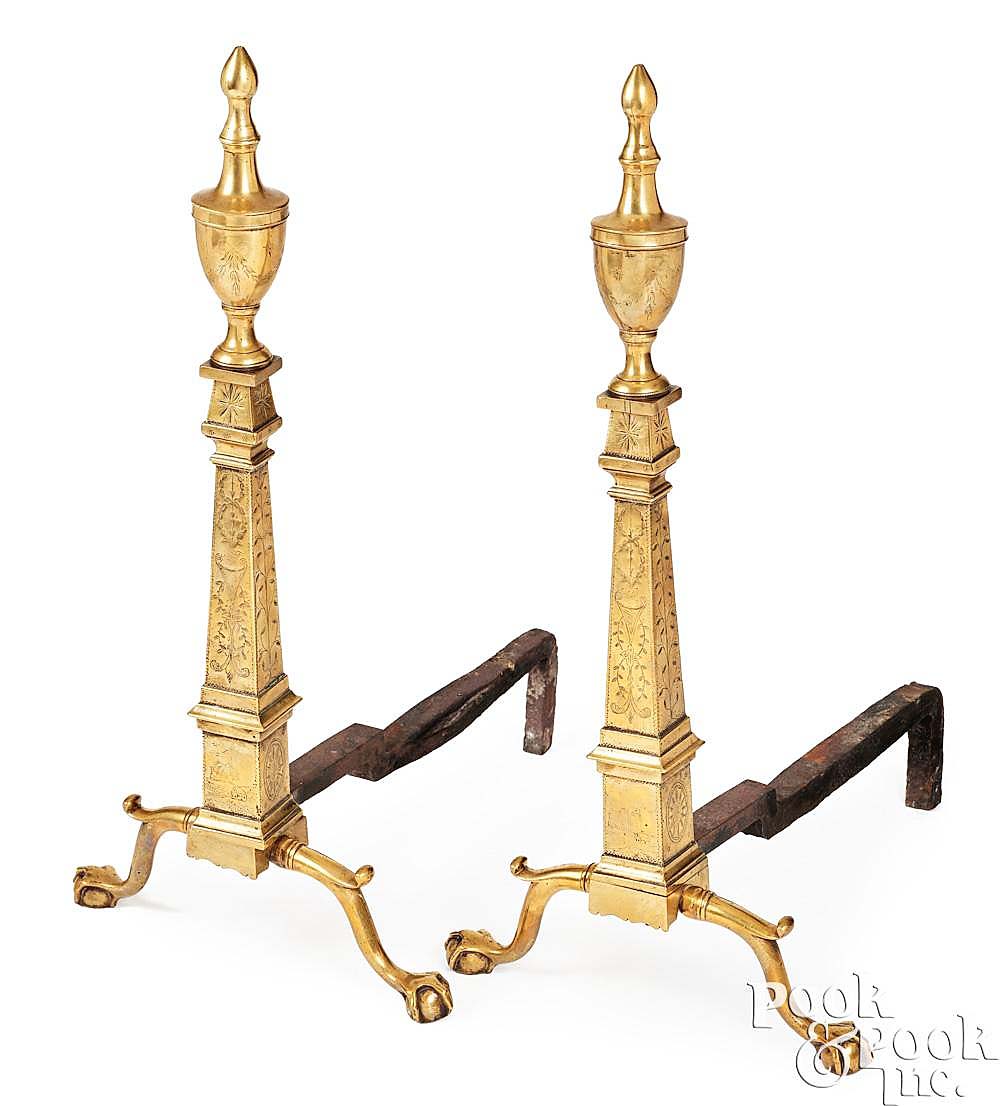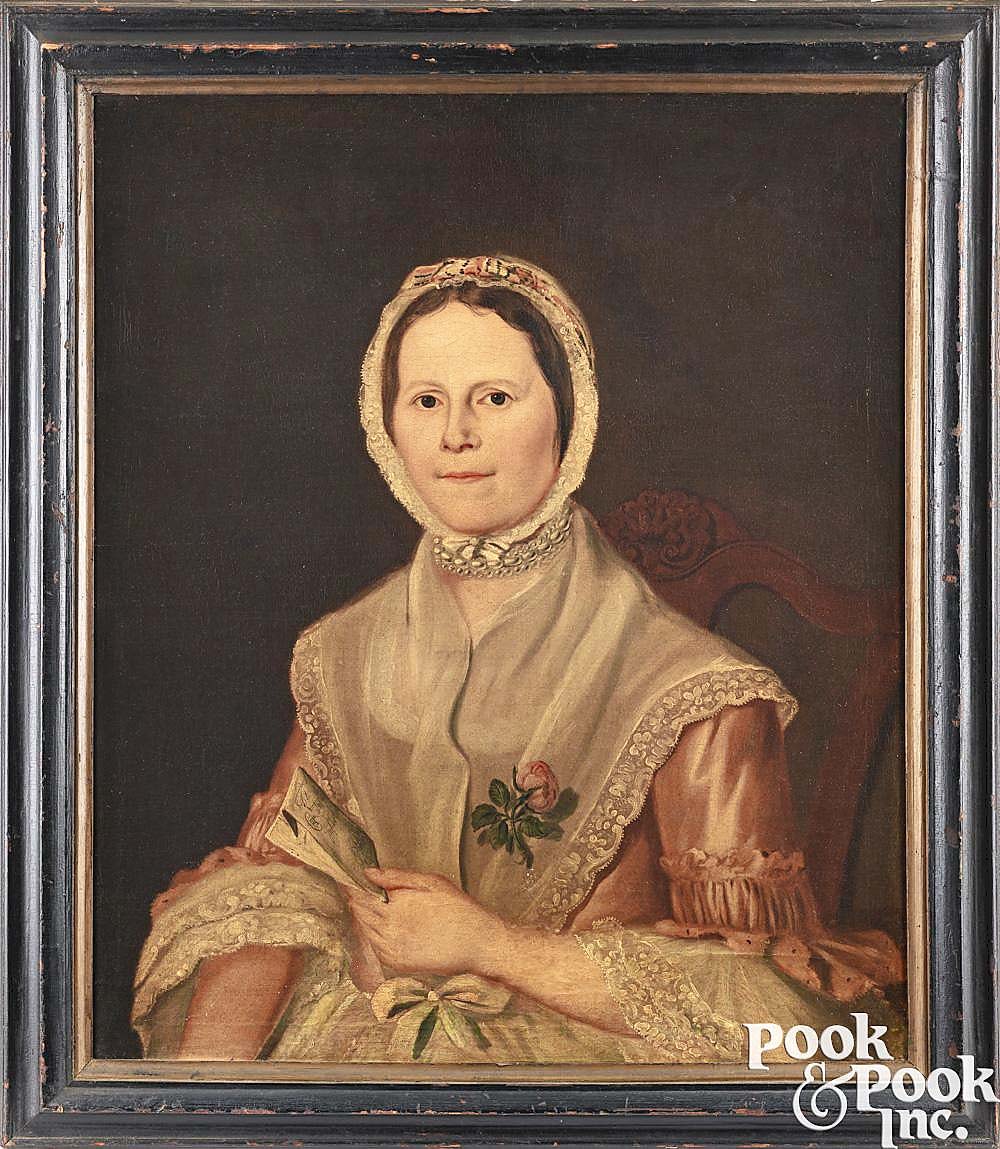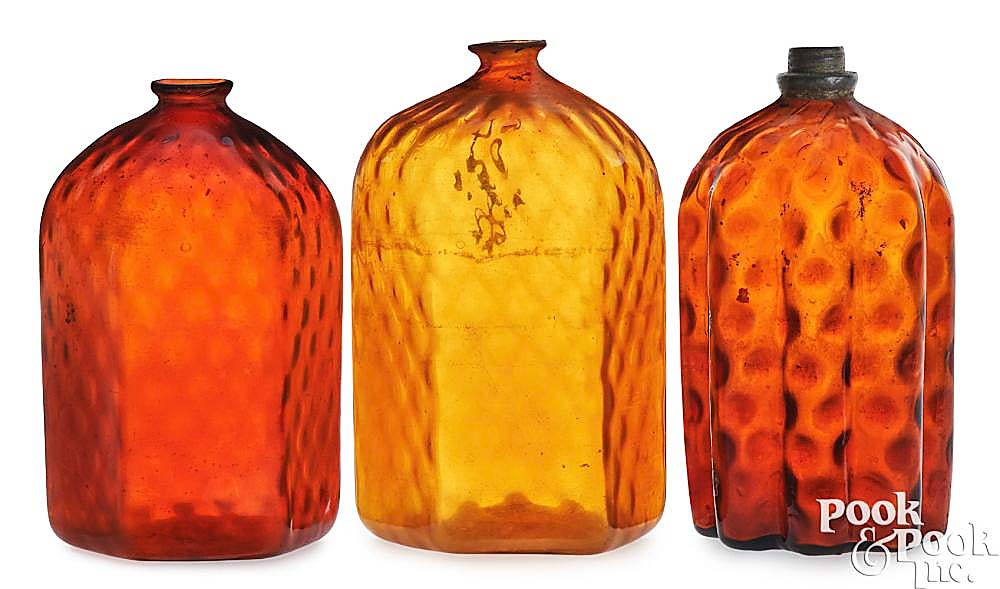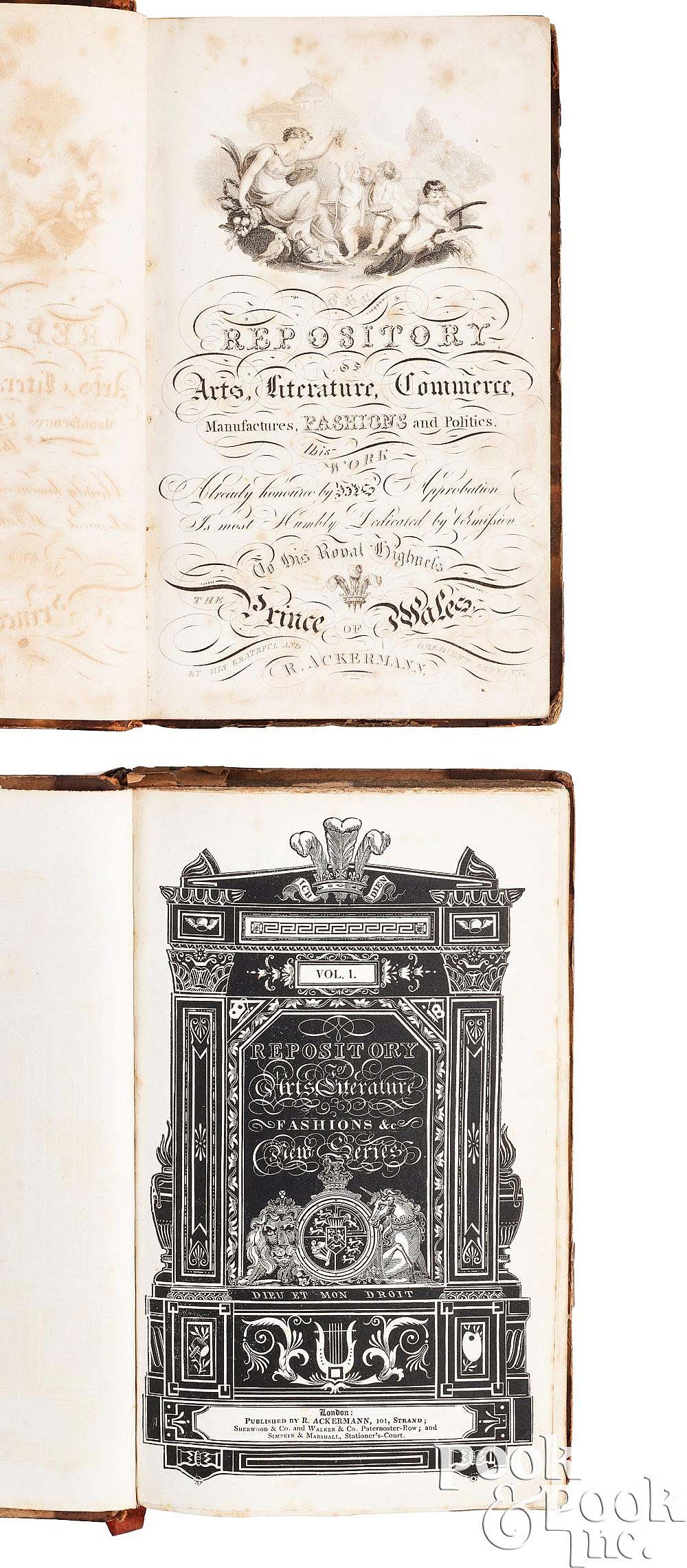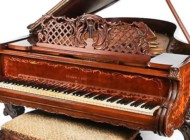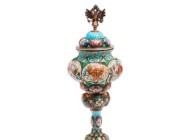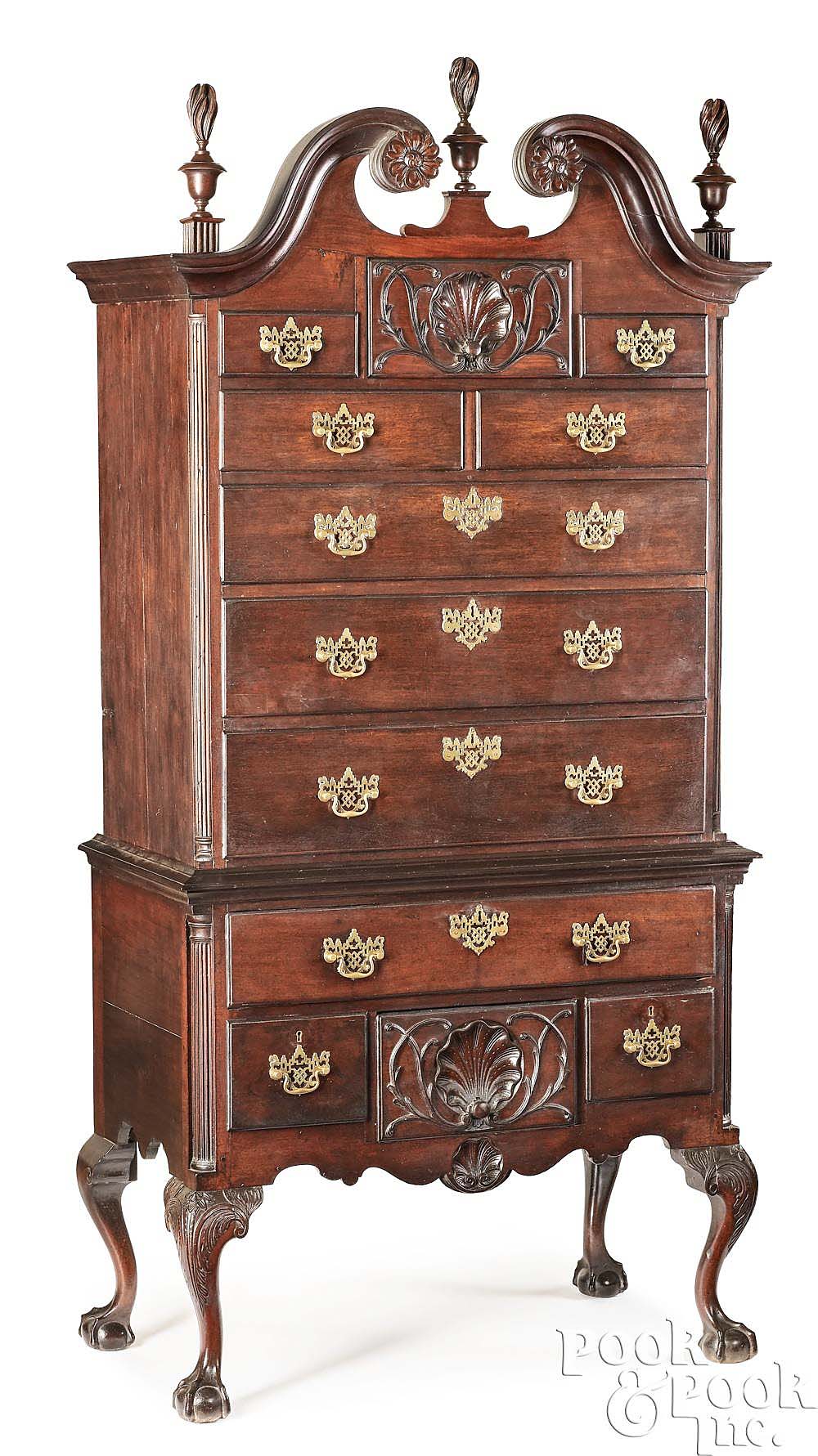
The educational institution in Baltimore that won this circa 1770 and later Baltimore Chippendale carved mahogany high chest of drawers for $30,000 was “thrilled to have it come back to Baltimore.” Despite being a married piece — period lower case and later upper case — it was the sale’s top lot ($10/18,000).
Review by Madelia Hickman Ring; Photos Courtesy Pook & Pook
DOWNINGTOWN, PENN. — Joe Kindig Jr, his son, Joe Kindig III and granddaughter, Jenifer Kindig, were proprietors of Joe Kindig Antiques, preeminent Americana dealers in York, Penn., whose eye and expertise were instrumental in helping guide the collections of such early American collectors as Henry Francis du Pont, Ima Hogg, Wallace Nutting and Frances P. Garvan. Over the course of the firm’s 100-year history, the Kindigs helped institutions such as Colonial Williamsburg, Winterthur, Bayou Bend, the Baltimore Museum of Art, the Philadelphia Museum of Art and the Metropolitan Museum of Art, among many others, acquire masterworks for their collections. In January 2023, Sotheby’s offered about 300 lots in a sale that was nearly 86 percent sold by lot and achieved about $1.45 million.
Pook & Pook Auctions had the opportunity to handle another 730 lots in a two-day sale, February 8-9. All but a few pieces failed to sell and — with a sell-through rate of nearly 99 percent, the auction netted the family an additional $1,426,000 against a combined low/high estimate range of $633,000/987,000. More than half of the lots sold to buyers on Bidsquare and PookLive combined, while 55 buyers attended the sale in person and another 45 competed by phone.
In the auction’s catalog, company co-founder and auctioneer Ron Pook, wrote, “I met ‘Old Joe’ just before he passed away. I don’t remember where we met, but I do remember that he was just about barefoot. Joe III, I knew most of my life. Originally, he was this guy who guarded a treasure trove of antiques in York — way too good for a neophyte antiques dealer, such as I — to ever think of entering. Over the years he shared his enthusiasm and knowledge generously with me…What I most remember about Joe was that he did not suffer fools or anyone else, regardless of stature.”
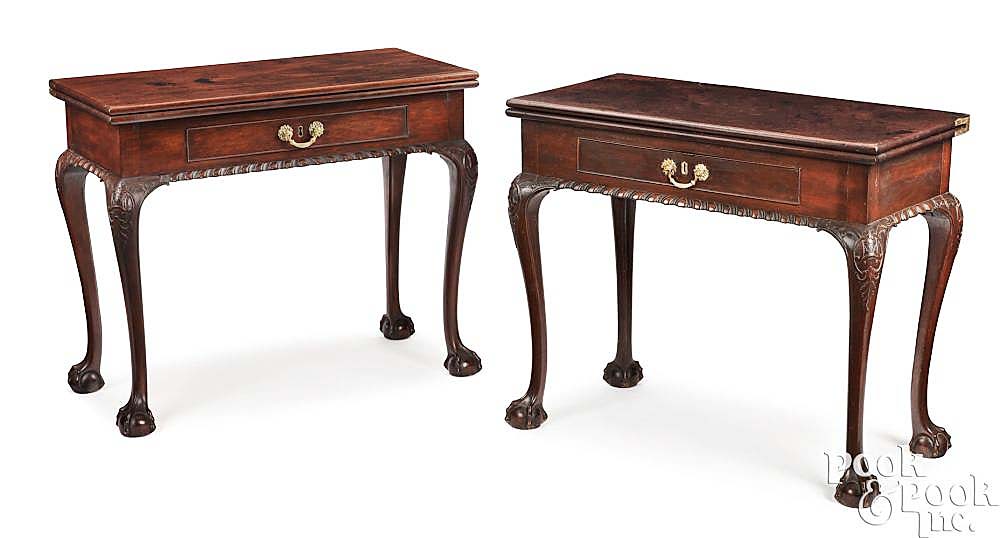
This rare pair of Philadelphia games tables have been owned by Charles Woolsey Lyon and Mrs J.A. Haskell, and now a longtime Pook client and collector who paid $28,160 for them, one of several purchases made in the sale ($15/20,000).
“Young Joe, now deceased, appreciated my enthusiasm and candor. It was a good sale; we’re happy with how it did,” said Ron Pook, relaxing in South Florida when Antiques and The Arts Weekly caught up with him after the sale. He noted the Kindig collection, which is vast, had really incredible pieces though some had condition issues; his job was to catalog and evaluate the collection fairly, with reasonable estimates and up-front condition reports.
It was a strategy that paid off, particularly in the case of the sale’s top lot, a Chippendale carved mahogany high chest of drawers that featured a circa 1770 base labeled by Gerrard Hopkins (1742-1800) and a later bench-made upper case with carving attributed to William Brampton. Estimated at just $10/18,000, it fetched $30,000. Not only had the piece been on long-term loan to the Baltimore Museum of Art but it was published in the museum’s 1987 catalog, American Furniture 1680-1880 from the Collection of the Baltimore Museum of Art. After the sale, the house confirmed the piece was going to an educational institution in Baltimore that had been bidding on the phone and prevailed against an online bidder.
Other institutions were also tenacious bidders. A Philadelphia educational institution purchased for $25,000 a rare Philadelphia Chippendale mahogany piecrust tea table, circa 1755, that was possibly by Nicholas Bernard. It featured a baluster standard with egg-and-dart ring supported on acanthus-carved legs that ended in ball and claw feet. According to the auction catalog, it relates to a similar table, referenced in the Kindig files, which was in private hands.
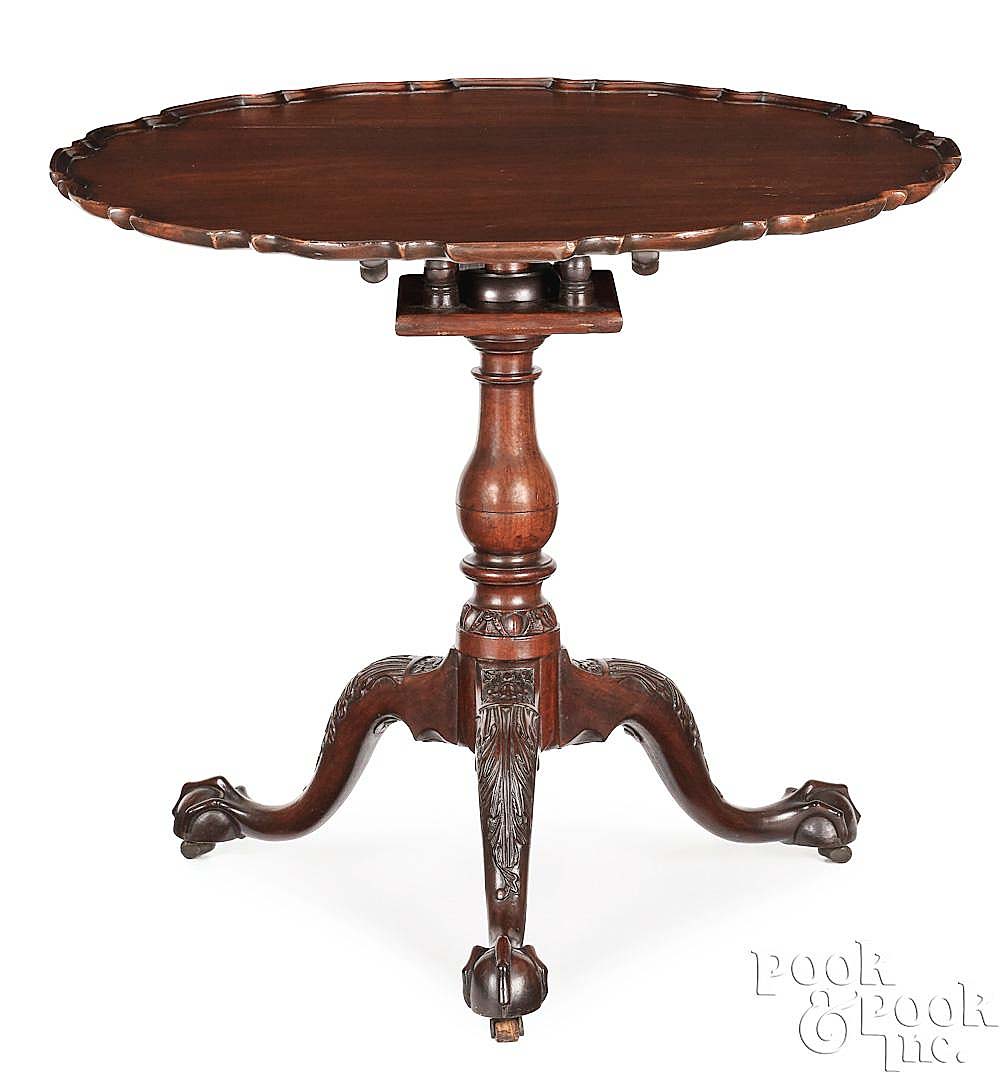
This Philadelphia Chippendale carved mahogany piecrust tea table was possibly made by Nicholas Bernard circa 1755. Described as “rare,” it sold to an educational institution in Philadelphia for $25,000 ($10/15,000).
Lisa Minardi, executive director at Historic Trappe, was bidding in the room and was thrilled to share two of her purchases with Antiques And The Arts Weekly. The first — for $4,000 — was a Pennsylvania sgraffito redware charger dated 1812, that was signed “Johannes Neesz” and depicted a swan in a pond within a script border.
“As one of the only signed examples of this important potter’s work, this plate is the benchmark for attributing dozens of other examples to Neis. It will be displayed in the museum’s Center for Pennsylvania German Studies and will be prominently featured in a forthcoming exhibition focusing on Montgomery County redware that is being planned for 2025.” She noted that Historic Trappe is also the owner of the only redware plate signed by Georg Hubener, another highly important Pennsylvania German potter and was ecstatic that these two plates will be preserved, exhibited and made available for study.
Minardi’s other Historic Trappe acquisition, made on the second day for $6,000, were watercolor and ink on paper fraktur bookplates made for Christian Meyer and Maria Landes by artist Johann Adam Eyer (1755-1837). The two-page family register documented the births of more than a dozen children. It remained in the original bible for which it was made, itself a copy of the so-called “gun wad” bible printed by Christopher Saur of Germantown in 1776. Minardi noted that because Saur was accused of being a Loyalist, his press was seized and many unbound pages of this bible edition were supposedly used as cartridge paper during the Battle of Germantown. The bible will be a highlight of the museum’s special exhibition for 2026-27 focusing on the German American experience during the Revolutionary War.
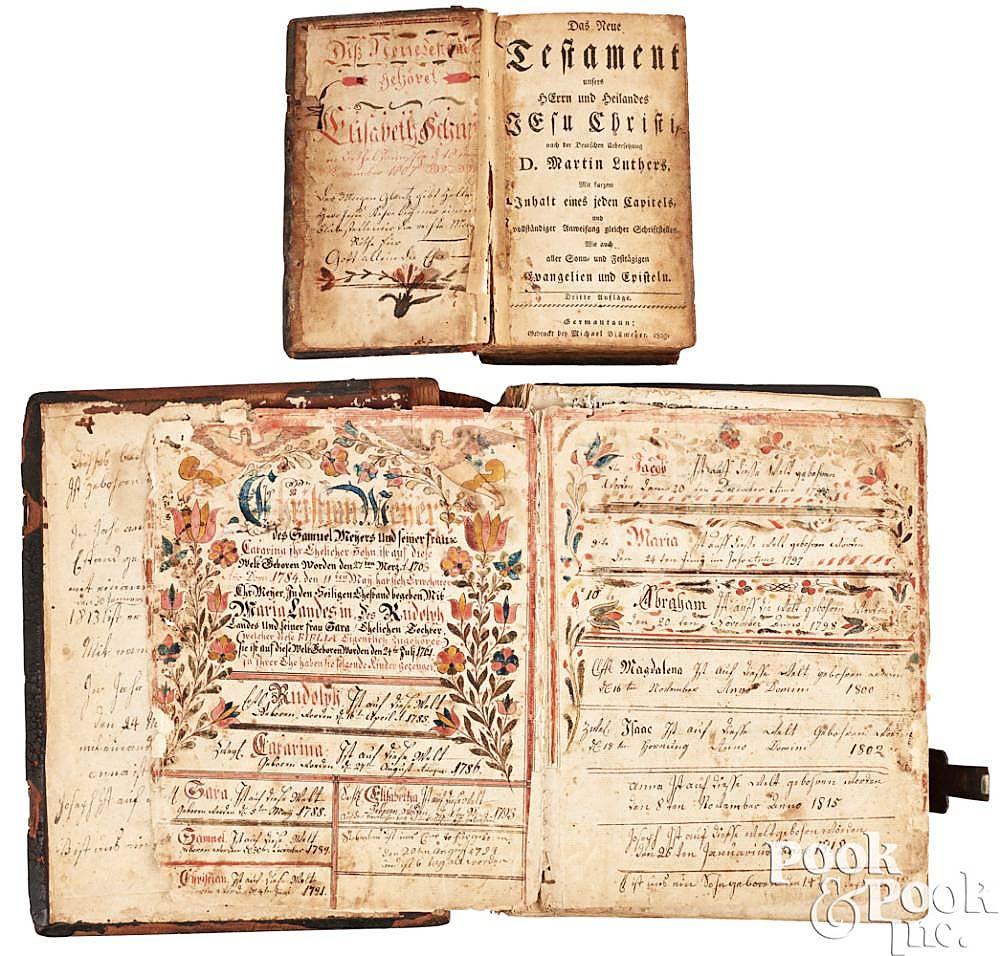
These fraktur bookplates by Johanne Adam Eyer for Christian Maria Landes, are dated 1784 and were housed in a 1776 Germantown bible; they were sold alongside a Germantown Martin Luther New Testament with a bookplate for Elisabeth Schim. The lot was acquired for $6,000 by Historic Trappe ($400/600).
An unidentified Pennsylvania museum paid $18,750 for The Works in Architecture, London, of Robert and James Adam, Esquires by Robert Adam (1728-1792) and James Adam, London. According to the catalog, the volume, which was first published 1788-79, was “considered the most beautiful and innovative British architectural book of the Eighteenth Century.”
The Kindig’s collection featured many rare manuscripts and editions; Ron Pook shared the story of a collector who had tried to buy some books from “Old Joe” in the 1960s. The collector told Pook that Kindig “wouldn’t discuss it back then.” So, he came to the sale to try his luck there. Though Pook didn’t confirm his identity, he may have been the New York collector who purchased, also for $18,750, Rudolph Ackermann’s The Repository of Arts, Literature, Commerce, Manufactures, Fashions and Politics (London, 1809-1828). Other titles in the sale were William Kent’s 1727 book, The Designs of Inigo Jones, Consisting of Plans and Elevations for Publick and Private Buildings (London) ($11,250); The First Book of Architecture, by Andrea Palladio, London: J.M., 1663, translated by Godfrey Richards ($8,960); and the perennially popular, The Gentleman and Cabinet-Maker Director. Being a Large Collection of the Most Elegant and Useful Designs of Household Furniture in the Gothic, Chinese and Modern Taste, by Thomas Chippendale, London: Printed for the Author, 1754 ($7,680).
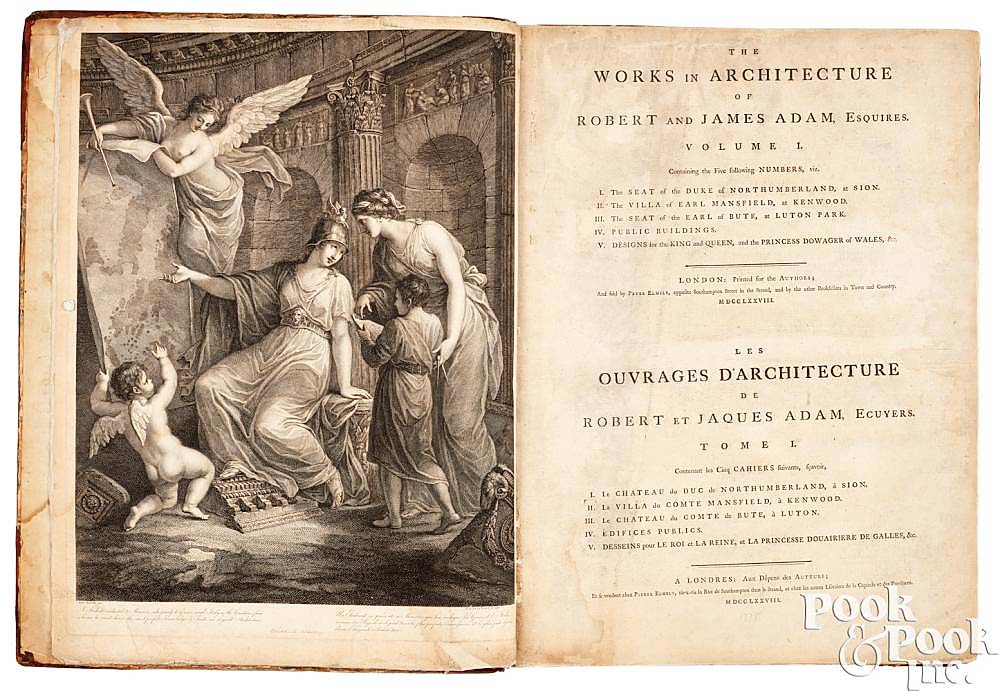
A seminal volume in popularizing Neoclassical ideas of interior planning and British architecture was The Works in Architecture, London, of Robert and James Adam, Esquires, by Robert and James Adam in London. Printed for the authors and sold by Peter Elmsly in two volumes, 1778-1786. The lot had been fully restored in 2013 and sold to a Pennsylvania museum for $18,750 ($4/8,000).
Earning a second-place finish at $28,160 was a pair of Philadelphia Chippendale carved mahogany games tables, circa 1770, with carving attributed to Martin Jugiez. One of the pair was previously published in American Furniture and Decoration: Colonial and Federal by Edward Stratton Holloway (Philadelphia, 1928). Charles Woolsey Lyon and the noted collector Mrs J.A. Haskell had also previously owned the tables. According to Pook specialist and auctioneer Jamie Shearer, the tables were purchased by a longtime Pook & Pook client and collector.
The same buyer purchased for $23,750 a circa 1775 Philadelphia Chippendale desk and bookcase that featured a carved pediment attributed to Martin Jugiez and a carved bust of Milton as its central finial. Illustrated in both volume three of Wallace Nutting’s Furniture Treasury and the February 1934 issue of The Magazine Antiques, the piece had also been included in the Metropolitan Museum of Art’s 1992 exhibition “American Rococo, 1750-1775: Elegance in Ornament.”
Another lot that was added to that buyer’s invoice was a Philadelphia Queen Anne balloon seat chair, circa 1760, for which they paid $23,040.
Another long-time client of Pook & Pook, from Pennsylvania but bidding online through PookLive, paid $27,500 and the third-highest price of the event for the sale’s first lot, a circa 1770 Philadelphia Chippendale mahogany high chest. It retained its original brasses and featured carved rosettes and shell carving.
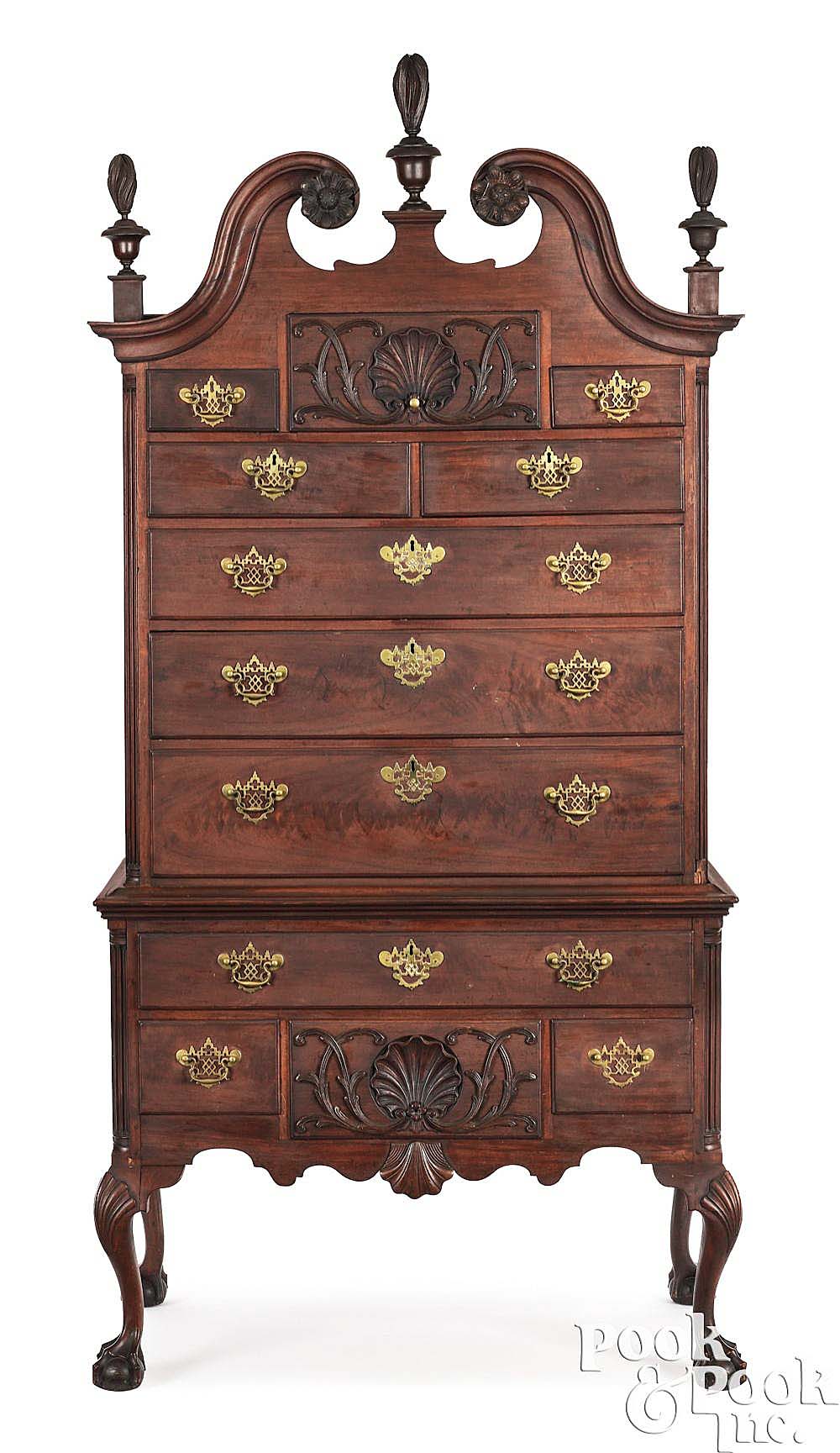
The first lot of the sale set a high bar at $27,500 that only two other lots exceeded. This Philadelphia Chippendale carved mahogany high chest, circa 1770, found a new home in Pennsylvania with a long-time Pook & Pook client ($12/18,000).
The same price of $27,500 was realized for an early Eighteenth Century William and Mary white-painted wainscot armchair from New England or New York that was described in “as-found condition (with) general wear, scratches, dirt, torn upholstery.” Bidders, enticed by a $1,5/2,000 estimate, were not deterred by these and a few other condition issues and, after a lengthy battle between phone bidders, it found a new home with a collector in Canada.
A pair of Italian coastal scenes, executed in oil on canvas and dated to the Seventeenth or Eighteenth Century, more than tripled the high estimate and were purchased by a European buyer, bidding on the phone, for $12,500.

This pair of Italian coastal scenes, Seventeenth or Eighteenth Century, oil on canvas, 27 by 46½ inches, sold to a European buyer, bidding on the phone, for $12,500 ($2/4,000).
European works of art were another of the Kindigs’ areas of expertise and the sale proffered bidders numerous examples to chase. An Eighteenth Century Continental felt bed cover that featured an extensive program of varied decoration found a new home with a Midwest collector for $16,250. Interestingly, it lacked two panels that had been offered as framed works when Pook & Pook sold the collection of Dr and Mrs Donald Shelley in 2007; at the time, the framed panels achieved more than $10,000.
An exemplary Fifteenth Century Northwest European Three Kings candlestick, described as one of the tallest and best examples of the form, related to an example on display and published by Hildegard Hoos and the Frankfurt Museum of Handicrafts in Candlesticks from Eight Centuries (1987). It sold just below estimate for $12,500, to a Pennsylvania collector bidding online through PookLive.
Pook & Pook will conduct its’ Americana & International Auction on April 18-19.
Prices quoted include the buyer’s premium as reported by the auction house. For information, www.pookandpook.com or 610-269-4040.

